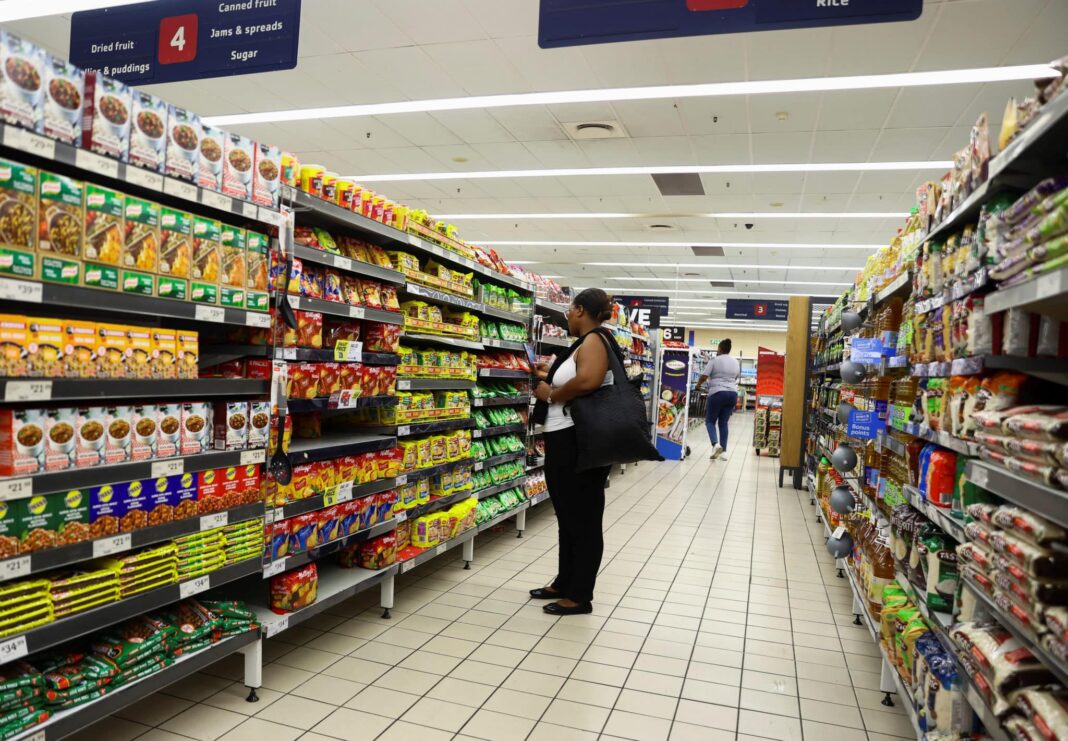Johnathan Paoli
Statistics South Africa has praised the lowest annual inflation the country has experienced in the year, sitting at 5.3%, a decrease from 5.6% recorded in February – lower than economists’ expectations.
The National Statistical Service said on Wednesday following two months of increases, with the consumer price index going up by 0.8% compared to February when it was 1.0%; inflation has held its ground between 5% and 6% since September last year.
StatsSA said that the main contributors to the annual inflation rate were housing and utilities increasing by 5.9% and contributing 1.4 percentage points, miscellaneous goods and services that increased by 8.5% and contributed 1.2 percentage points, food and non-alcoholic beverages increased by 5.1% and contributed 0.9 of a percentage point and transport increased by 5.3%, contributing 0.8 of a percentage point.
Lower food inflation came as a relief with a three-and-a-half year low, with bread and cereals coming at 5% from 6.1% in February, a significant drop from 21.8% in January 2023.
Due to lower beef and mutton prices, meat inflation has decreased in March, from 11.4% in February, to 0.8% in March.
However, the information service said that the annual inflation for sugar, sweets and desserts has remained above the 15.0% level since June last year; with March’s rate at 17.8%.
Other price changes include alcohol and tobacco which went up by a monthly 1.9% due to annual increases in excise taxes, this highest monthly rise since March last year, with an overall increase of 4.5% over the last 12 months.
Housing rent went up by 0.8%, while transport increased by 2%, mainly due to a monthly increase of 5.3% in fuel prices.
Education fees increased by 6.3%, the highest since 2020; with high schools recording an increase of 7.3%, followed by primary schools and tertiary institutions with a 5.9% increase.
Pre-primary schools increased their fees by 6%, while university accommodation experienced an average increase of 8.2% in comparison to last year.
Despite the lower year-on-year inflation figure, the increase remains above the 4.5% midpoint of the South African Reserve Bank’s (SARB) target, with the central bank previously declaring that it would not cut interest rates until inflation is consistently closer to the middle of its 3% to 6% range.
However, First National Bank (FNB) said that signs of consumer distress provided a compelling rationale for the Monetary Policy Committee (MPC) to ease rates sooner, which is expected to uphold stability and bolster cyclical growth.
FNB said that while inflation may have reached its peak, the ongoing disinflation trajectory remained precarious, underscoring material upside risks and necessitating the MPC to exercise extreme caution in avoiding premature interest rate cuts.
Economists have argued that prolonging rate cuts beyond necessity, particularly when broader financial conditions were already restrictive, could further stifle growth and heighten the likelihood of a technical recession.
The country narrowly escaped a technical recession last year, following a consecutive contraction in gross domestic product (GDP), with the Fourth Quarter’s GDP reaching 0.1% and the annual economic growth for last year being recorded at 0.6%.
Many have expected rate cuts to only start in September and November this year and that in light of the conflict in the Middle-East and the subsequent petrol price increases meant that upside risks to inflation remained a reality.
An “upside risk” refers to the potential for an investment to outperform its expected return, leading to higher than anticipated profits, which could lead to volatile investment returns, which some investors may wish to avoid depending on their risk tolerance and investment goals.
The Monetary Policy committee is expected to make an announcement at its next sitting at the end of May.
INSIDE POLITICS

